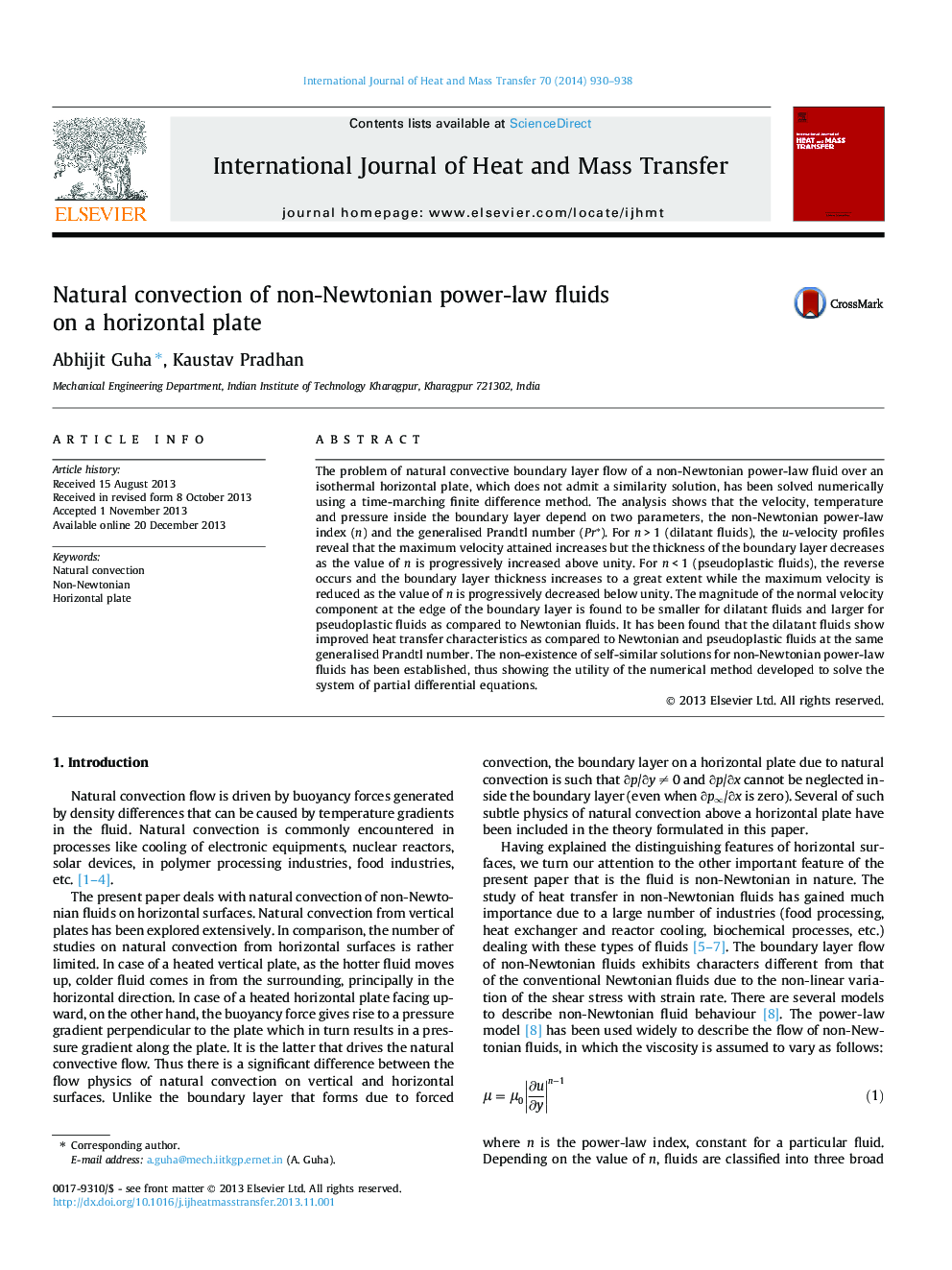| Article ID | Journal | Published Year | Pages | File Type |
|---|---|---|---|---|
| 657654 | International Journal of Heat and Mass Transfer | 2014 | 9 Pages |
The problem of natural convective boundary layer flow of a non-Newtonian power-law fluid over an isothermal horizontal plate, which does not admit a similarity solution, has been solved numerically using a time-marching finite difference method. The analysis shows that the velocity, temperature and pressure inside the boundary layer depend on two parameters, the non-Newtonian power-law index (n) and the generalised Prandtl number (Pr∗). For n > 1 (dilatant fluids), the u-velocity profiles reveal that the maximum velocity attained increases but the thickness of the boundary layer decreases as the value of n is progressively increased above unity. For n < 1 (pseudoplastic fluids), the reverse occurs and the boundary layer thickness increases to a great extent while the maximum velocity is reduced as the value of n is progressively decreased below unity. The magnitude of the normal velocity component at the edge of the boundary layer is found to be smaller for dilatant fluids and larger for pseudoplastic fluids as compared to Newtonian fluids. It has been found that the dilatant fluids show improved heat transfer characteristics as compared to Newtonian and pseudoplastic fluids at the same generalised Prandtl number. The non-existence of self-similar solutions for non-Newtonian power-law fluids has been established, thus showing the utility of the numerical method developed to solve the system of partial differential equations.
